Making your own flour can appear daunting, but the process is actually rather straightforward.
Flour is defined as a powder made by grinding raw grains, roots, beans, nuts, or seeds. So long as you have the right ingredients, all you need is something to grind it with, and you will have your own DIY flour!
Homemade rice flour does require more effort than just buying it from the store. However, if you create your own flour, you save money long-term.
You can also ensure that your flour is always fresh and made with high-quality ingredients. For some people, though, making their own flour is a matter of necessity.
What Is Rice Flour?
If you have Celiac disease or gluten intolerance, baked goods can be a nightmare. When it comes to making your own food, it’s much better to do it yourself and ensure that it’s gluten free. Of course, wheat is out of the question – so you’ll need some rice flour.
Rice flour is a gluten-free staple when it comes to baking and cooking. However, it can be a bit hard to find in smaller stores.
It also tends to be far more expensive than regular flour and definitely more expensive than when you make it personally. Since you’re creating your own baked goods, why not make your own rice flour as well?
Rice flour is simply flour made from ground-up rice. It is made from sweet rice and is considered a staple in many Japanese treats like mochi. However, it can be used in a variety of applications in the kitchen.
Rice Flour Substitute
Rice flour cannot be used as a 1:1 substitution for regular flour. This is because rice flour contains no gluten, and it is considered a much harder grain than wheat. This means it will not absorb water as well as wheat does. If you end up swapping rice flour for regular flour in recipes, you will find that it makes your baking results gritty, greasy, and gummy.
Rice flour will behave better when it is a combination of different rice types and starches. This is especially true for those who are substituting wheat flour in a recipe. However, there are no hard and fast rules for substitution since there are too many parts in a recipe to consider.
Moisture, fat content, and other elements will affect the end product, especially in baked goods. Knowing the different properties of each flour can help. Try experimenting with different flours, and keep a log of what works best, as this can guide you in future recipes.
A few of the more popular rice flour substitutes to consider experimenting with include:
Cornstarch
This is a good rice flour substitute for fried foods and works as a thickening agent. It is gluten free and has no taste, so it won’t interfere with your recipes. You can also use cornstarch as a substitute rice flour in your baked goods, but it cannot be a standalone replacement option. You will have to add other ingredients to achieve your desired effect.
All Purpose Flour
If you need a rice flour substitute that is gluten free, then all purpose flour is not what you are looking for. However, it can be used for almost anything in your kitchen. When it comes to baking, all purpose flour can even be considered superior to rice flour because it offers a less brittle texture and leaves you with fluffier baked goods.
Almond Flour
Almond flour is another gluten free option made from ground almonds. Almond flour is good for baked goods and even offers a slightly nutty flavor.
Coconut Flour
This is gluten and grain-free and can be used in almost any recipe that calls for rice flour. It is high in fiber and low-calorie and is also easy to digest. It has a natural sweetness to it, which is great when used in baked goods. When substituting rice flour for coconut flour, you want to use about 50% less coconut flour due to its sweetness.
Millet Flour
This rice flour substitute is great when baking bread and other baked goods like cakes and muffins. Some have used it for frying but prefer to keep its use with bread making.
Sorghum Flour
This is also gluten free and packed with nutrients. You can use a 1:1 conversion rate when substituting sorghum flour for rice flour. However, keep in mind that its taste can be a bit bitter and sometimes overwhelming. Other flour types are often added to overcome this, but it is still a good option when it comes to making bread because it helps the bread rise.
Tapioca Flour
This flour has little to no taste and can even add a somewhat rich creaminess to what you make with it. It also can improve the texture of a variety of baked goods. However, it is a bit sweeter than rice flour and will work best when combined with other flour types.
Chickpea Flour
This flour is naturally gluten free, contains a ton of nutrients, and is a good source of fiber. Chickpea flour is used often in baked goods like tortillas and pancakes since they are dense. It can also be used as a 1:1 substitute for rice flour. However, it can suck up moisture quickly, making your dough sticky if you aren’t careful.
How to Make Rice Flour at Home
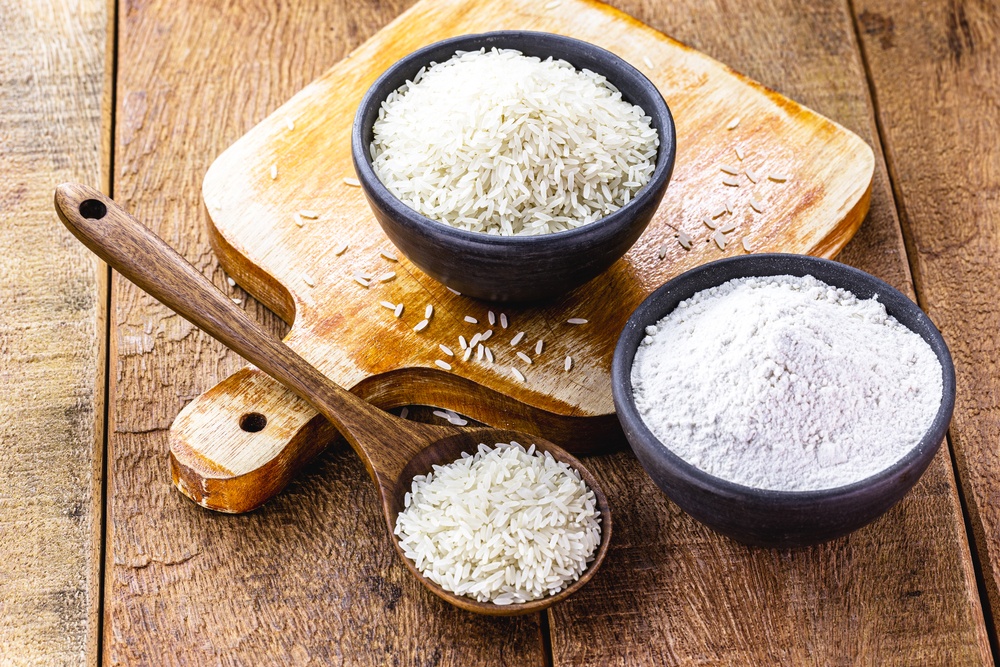
DIY rice flour doesn’t have to be hard.
Here are a few things you need to know, whether you’re wondering how to make brown rice flour or some other variety.
Types of Rice Flour
There are many types of rice flour, but no single type will perfectly mimic wheat flour.
It’s always better to combine different types to get the intended result – unless the recipe calls specifically for the rice variety.
Brown Rice Flour
In terms of flavor, brown rice tends to have a sweeter and nuttier flavor than white rice. However, when it comes to baking, brown rice can give an interesting, fuller taste.
However, some varieties may have an odd flavor; it pays to test the flour before using it in a large recipe.
For those concerned with the look of their baked goods, note that brown rice will darken your baked goods. Also, since it tends to be denser, brown rice flour will make your creations heavier and thicker.
When it comes to nutrition, brown rice takes the prize. It’s brown because of the presence of bran, which contains increased levels of protein and fiber. Unfortunately, a high-fat content also means that brown rice will have a reduced shelf life.
Brown rice is great for cookies, as it adds a bit of crispiness. Used alongside other flours, 30 to 60 percent brown rice would be adequate for your recipe.
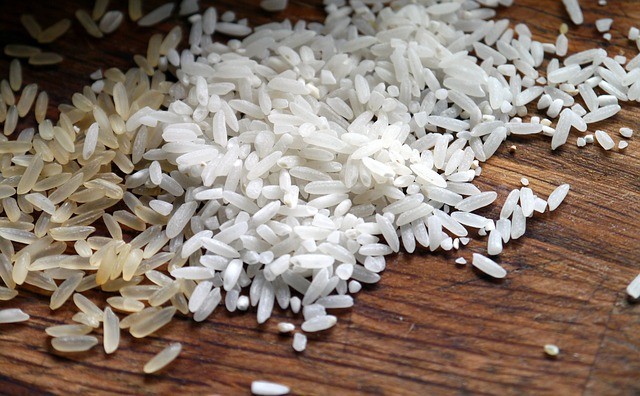
White Rice Flour
White rice flour is smoother in texture and has a blander flavor than its brown cousin. However, it will not add any flavor to your recipes.
White rice will also be much cheaper than brown rice and easier to find. In addition, white rice tends to have a longer shelf life, making it a great choice for those on a budget.
Because it has less fat content, white flour will be drier. Therefore, it’s not the best flour to use in recipes with low amounts of liquid, like cookies and muffins.
It also tends to color baked goods a translucent white. When choosing this kind, use it in conjunction with other flours, with about 30 to 60 percent of white rice flour included in the recipe.
Sweet Rice Flour or Glutinous Rice Flour
This is the best type of rice flour compared to the brown and white types. However, it can be more difficult to find than the other types.
It’s also worth noting that its name is a bit of a misnomer; sweet rice flour is not sweet.
This flour is more elastic than others, making it ideal for noodles and wraps. You will also need less of it when used as a thickener for soups and sauces. This flour is also the best for recipes with high-fat content.
If choosing sweet rice flour, be sure to use no more than 40 percent in combination with another flour type.
Equipment Needed to Make Rice Flour at Home
Rice flour can be made using a variety of kitchen equipment. However, using a kitchen appliance that you already own is a good idea for saving space and money.
However, you can always invest in an official flour grinder to save on time since this machine is uniquely designed for grinding ingredients – like rice – into flour.
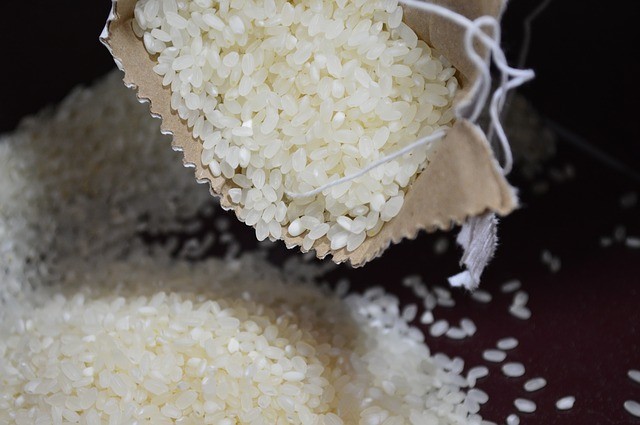
- Mortar and Pestle: For those who don’t have any other kitchen appliance, it’s possible to grind down the rice with a mortar and pestle. However, it takes a long time and a lot of effort to achieve the right consistency.
- Blender: Besides a flour grinder, a blender is the best tool for turning rice into flour. A blender is a way to go for those who won’t regularly make a great deal of rice flour. A blender can work with at least a cup of rice per batch. Just remember: Most blender models aren’t meant to blend without liquids, so using this way could dull its blades.
- Coffee Grinder: If you don’t have a blender, coffee grinders are a great alternative. They have a lot of power and can make very fine flours. However, you will only be able to work with two to three tablespoons of rice at a time; any more will clog your grinder. When grinding multiple batches, watch the temperature of your coffee grinder. Unplug it for a few minutes now and then so it doesn’t overheat.
- Food Processor: Food processors are another delightful tool for making flour. When using a food processor, add about three tablespoons of flour per batch. A smaller batch will let you get a finer grind on your flour.
- Flour Grinder: As you may have guessed, a flour grinder is specifically made to let you create flour. Having an entirely new kitchen tool may not be the most economical choice unless you’re making a great deal of flour
Method: How to Make Rice Flour at Home
You can easily stick your rice in a grinder without much trouble, but soaking it beforehand will help you achieve a finer texture.
Here’s how to achieve this texture. Start by adding moisture to your rice, and then remove the moisture when you are done.
- Wash your rice. If your rice came in a pack, you don’t have to clean out the entire batch. However, it always pays to be safe. Rinse your rice under cold, running water, then drain it.
- Soak the rice for about three to six hours.
- After draining the rice, spread it out on a fabric towel or paper towels. Let the rice dry for about an hour until it is slightly dry to the touch.
- Grind the rice. No matter what equipment you use, it’s always best to start with pulses to break down the larger pieces. Then, leave it to grind until you reach a powdery texture.
- Add a cup of flour to a skillet and place it over medium heat. Stir constantly until the flour stops steaming. The rice should be less opaque but not brown. If it begins to brown, lower the heat.
- Check for dryness. Take a pinch of flour between your thumb and forefinger. Dry flour will not stick.
- Sift the flour. Any clumps should be ground again.
Storing Rice Flour
Rice flour is always best used when fresh but storing it correctly will keep it safe for later consumption. White rice can be stored in a freezer for six months to a year; brown rice lasts less.
Make sure to put your flour in a container with a lid. When cooking or baking, only remove and thaw out the amount that you need. If you store your rice flour in a cabinet, it will only last for a few months.
When you notice mold or weird smells, throw out the entire container.
This video explains more about how to make rice flour.
If you are storing rice flour dough, it can be stored safely for 6 to 8 hours without refrigeration. If left longer, especially during warmer times, the dough can begin to grow bacteria that can ultimately cause food poisoning. Always store your rice flour dough in a high-quality and high-grade plastic container and keep it refrigerated.
Can I Add Yeast to Rice Flour?
Since rice flour is gluten free, it cannot be used to make yeast breads. This is because yeast breads require gluten for them to rise properly. You also have to remember that you can’t substitute rice flour for wheat flour.
Rice flour should be combined with other ingredients if you want to make delicious, moist bread. A bread made with rice flour and the added ingredients have a lower loaf volume, a harder texture, and a much shorter shelf life.
Rice Flour Recipes
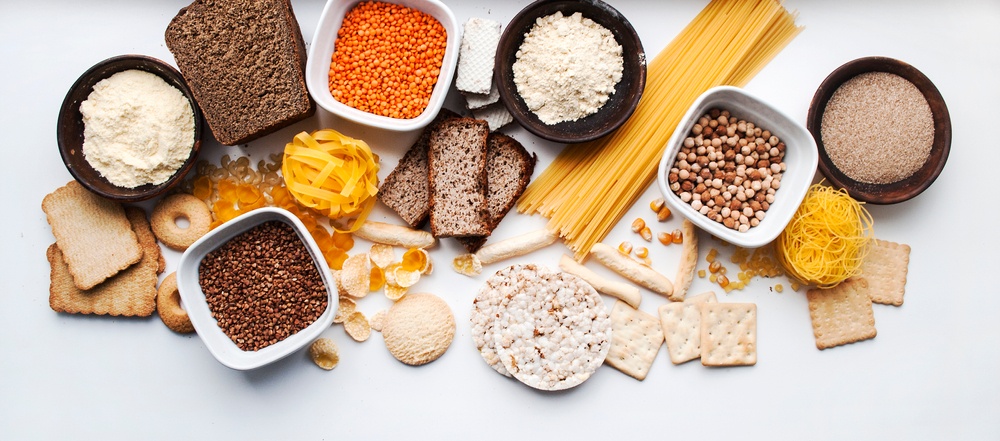
Now that you’ve whipped up your own batch of rice flour, why not try your hand out at some of these recipes?
Each is great for beginners and can help you understand how to use rice flour in baking and cooking.
White and Brown Rice Bread
This recipe uses both white and brown rice flour.
It’s a good recipe to start with if you’re new to baking with this variety, as it showcases the advantages of blending multiple types of flour to achieve the right texture.
Ingredients
- 1 cup of white rice flour
- 1 cup of brown rice flour
- 1 1/2 teaspoons of xanthan gum
- 1 teaspoon of salt
- 1/3 cup of milk
- 2 tablespoons of honey
- 2 eggs
- 3 tablespoons of olive oil
- 1 cup of water
- 2 teaspoons of cider vinegar
- 1 packet of instant yeast
Procedure
- Combine wet ingredients in a mixer using a dough hook
- Bit by bit, add the dry ingredients. Start with both white and brown flour, followed by xanthan gum, then salt and yeast
- Keep mixing until the dough becomes the right consistency: light and sticky
- Pour the dough into a bread pan
- Cover and let it rest until it’s doubled in size. This may take a few hours
- Bake at 325 degrees Fahrenheit for about 20 minutes, or until it’s golden brown
Gluten-Free Pancakes
These pancakes from the BBC are a good and easy recipe for tasty mornings.
Ingredients
- ¾ cup of tapioca flour
- A ¾ cup of rice flour
- ½ teaspoon of salt
- 4 large eggs
- 1 ½ cup of milk
- 4 tablespoons of melted butter
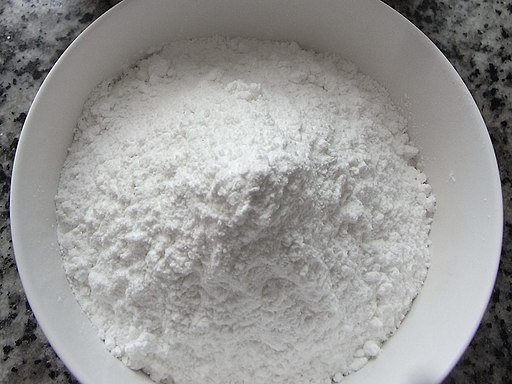
Procedure
- Sift all the flour and salt into a large bowl. Create a well in the center
- Lightly beat the eggs and drop them into the well. Whisk the ingredients starting from the center, slowly bringing in the dry ingredients
- When most of the dry ingredients have been incorporated, add the milk. Continue to mix until the batter is smooth
- Refrigerate the batter for at least an hour. Before cooking, give it a bit of a whisk, making sure not to add in new bubbles
- Add in the butter
- Cook the pancakes as you please!
Gluten-Free Pasta
For those who want their pasta gluten-free, this recipe is for you. With just a few ingredients, including brown rice flour, this recipe is quick and easy.
Ingredients
- 1 1/2 cup of brown rice flour
- 1/2 cup of potato starch
- 2 teaspoon of xanthan gum
- 1 teaspoon of salt
- 4 eggs
Procedure
- Sift all the dry ingredients into a bowl
- Whisk the eggs in a separate bowl. Try to incorporate as much air as you can
- Blend the flour mixture and the eggs in a free-standing mixer. Blend until it reaches a doughy consistency. You may also opt to do this by hand
- After mixing, portion out the dough into small balls, about the size of a tennis ball. Add a bit of oil if the mixture remains too doughy
- Roll out each ball into thin sheets with a pasta machine or a roller. Cut the sheets into thin strips
- Congratulations, you now have your gluten-free pasta! You can cook this pasta as you would any variety, and pair it with your favorite sauces
This video shows an example of how to make bread using rice flour
Gluten free flour can be a bit daunting, but with experience, you are bound to whip up recipes like a pro!
What’s your favorite way to use rice flour?
